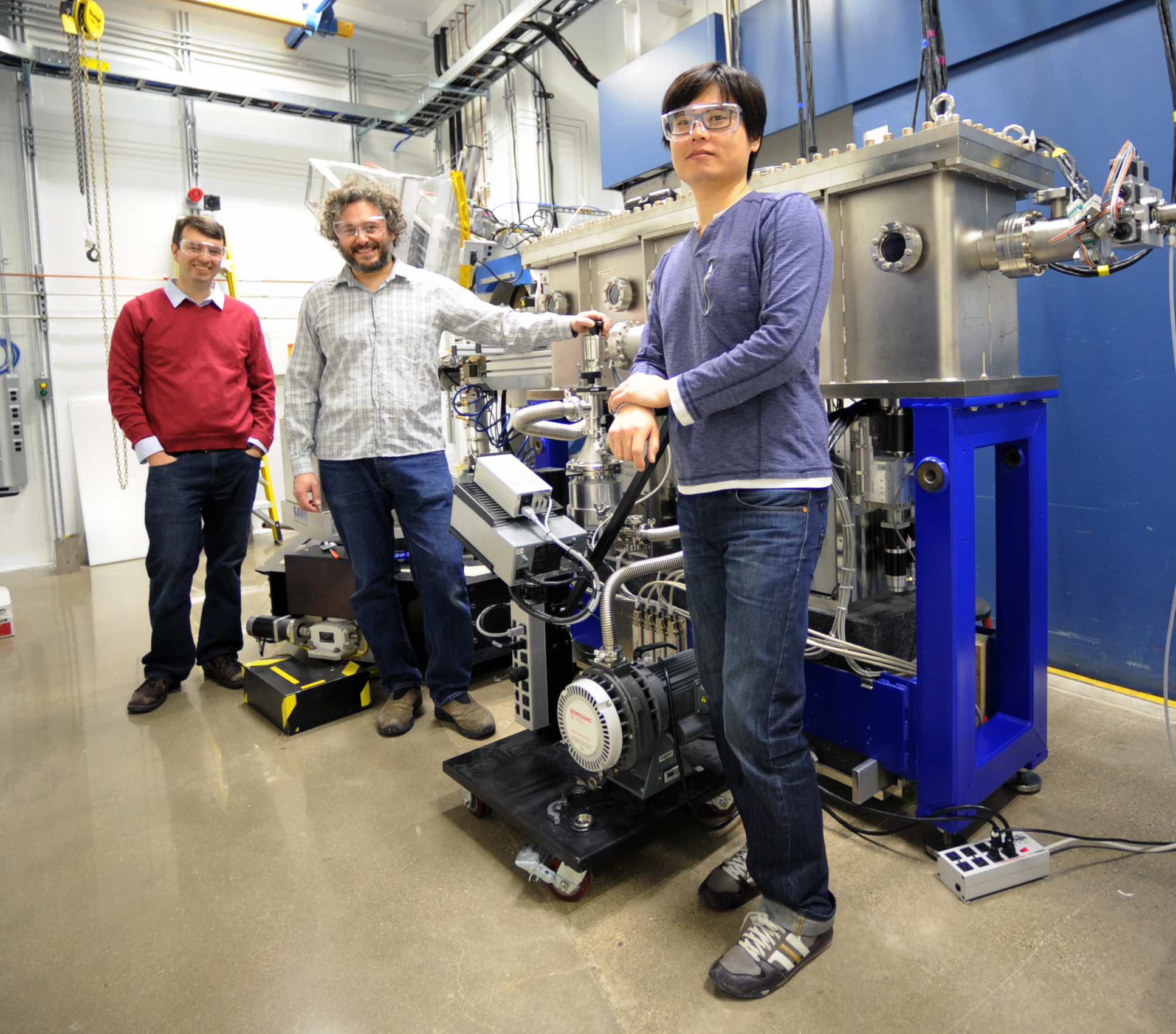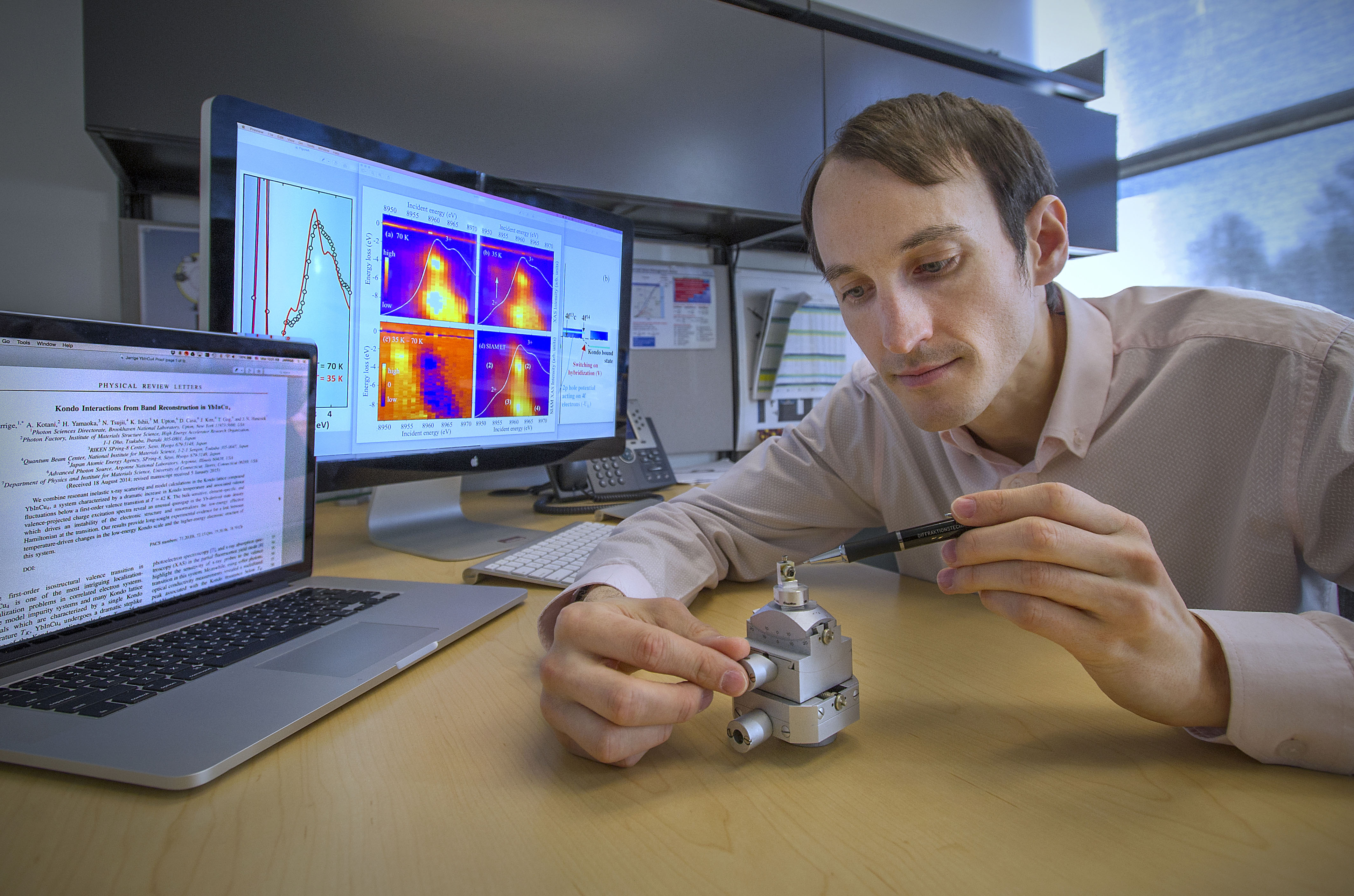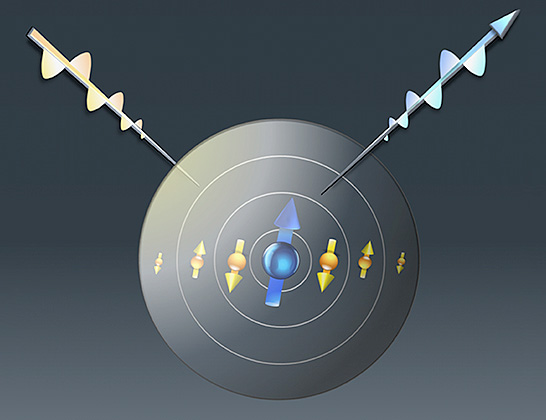The original University of Connecticut press release by Tim Miller can be read here.
From information storage to magnetic refrigeration, many of tomorrow’s most promising innovations rely on sophisticated magnetic materials. Now, researchers using the U.S. Department of Energy’s Advanced Photon Source (APS) at Argonne National Laboratory have made an experimental breakthrough in explaining a rare property of an exotic magnetic material, potentially opening a path to a host of new technologies.
These studies, by researchers from Brookhaven National Laboratory, the High Energy Accelerator Research Organization (Japan), the RIKEN SPring-8 Center (Japan), the Japan Atomic Energy Agency, the National Institute for Materials Science (Japan), Argonne, and the University of Connecticut marks a major advance in the search for practical materials that will enable several types of next-generation technology. A paper describing the team’s results was published in the journal Physical Review Letters.
The work is related to the Kondo Effect, a physical phenomenon that explains how magnetic impurities affect the electrical resistance of materials. The researchers were looking at a material called ytterbium-indium-copper-four (YbInCu4).
YbInCu4 has long been known to undergo a unique transition as a result of changing temperature. Below a certain temperature, the material’s magnetism disappears, while above that temperature, it is strongly magnetic. This transition, which has puzzled physicists for decades, has recently revealed its secret. "We detected a gap in the electronic spectrum, similar to that found in semiconductors like silicon, whose energy shift at the transition causes the Kondo Effect to strengthen sharply," said article co-author and Brookhaven National Lab physicist Ignace Jarrige.
Electronic energy gaps define how electrons move (or don’t move) within the material, and are the critical component in understanding the electrical and magnetic properties of materials. “Our discovery goes to show that tailored semiconductor gaps can be used as a convenient knob to finely control the Kondo Effect and hence magnetism in technological materials,” said Jarrige.
To uncover the energy gap, the team used resonant inelastic x-ray scattering (RIXS), an experimental technique that is made possible by the intense x-ray beam produced at the APS, which is an Office of Science user facility. By placing materials in the focused x-ray beam in the X-ray Science Division 30-ID x-ray beamline and sensitively measuring and analyzing how the x-rays scattered, the team was able to uncover elusive properties such as the energy gap and connect them to the enigmatic magnetic behavior.
The new physics identified through this work suggest a road map for the development of materials with strong “magnetocaloric” properties, the tendency of a material to change temperature in the presence of a magnetic field.
“The Kondo Effect in YbInCu4 turns on at a very low temperature of 42 Kelvin (-384F),” said article co-author University of Connecticut professor Jason Hancock, “but we now understand why it happens, which suggests that it could happen in other materials near room temperature.”
If that material is discovered, he adds, it could revolutionize cooling technology.
Household use of air conditioners in the U.S. accounts for more than $11 billion in energy costs and releases 100 million tons of carbon dioxide annually. Use of the magnetocaloric effect for magnetic refrigeration as an alternative to the mechanical fans and pumps in widespread use today could significantly reduce those numbers.
In addition to its potential applications to technology, the work has advanced the state of the art in research. “The RIXS technique we have developed can be applied in other areas of basic energy science,” said Hancock, noting that the development is very timely, and that it may be useful in the search for “topological Kondo insulators,” materials that have been predicted in theory, but have yet to be discovered.
See: I. Jarrige1*, A. Kotani2, H. Yamaoka3, N. Tsujii4, K. Ishii5, M. Upton6, D. Casa6, J. Kim6, T. Gog6, and J. N. Hancock7, “Kondo Interactions from Band Reconstruction in YbInCu4,” Phys. Rev. Lett. 114, 126401 (27 March 2015). DOI: 10.1103/PhysRevLett.114.126401
Author affiliations: 1Brookhaven National Laboratory, 2High Energy Accelerator Research Organization, 3RIKEN SPring-8 Center, 4National Institute for Materials Science, 5Japan Atomic Energy Agency, 6Argonne National Laboratory, 7University of Connecticut
Correspondence: *[email protected]
This research used resources of the Advanced Photon Source, a U.S. DOE Office of Science User Facility operated for the DOE Office of Science by Argonne National Laboratory under Contract No. DE-AC02-06CH11357.
Argonne National Laboratory is supported by the Office of Science of the U.S. Department of Energy. The Office of Science is the single largest supporter of basic research in the physical sciences in the United States, and is working to address some of the most pressing challenges of our time. For more information, please visit science.energy.gov.



